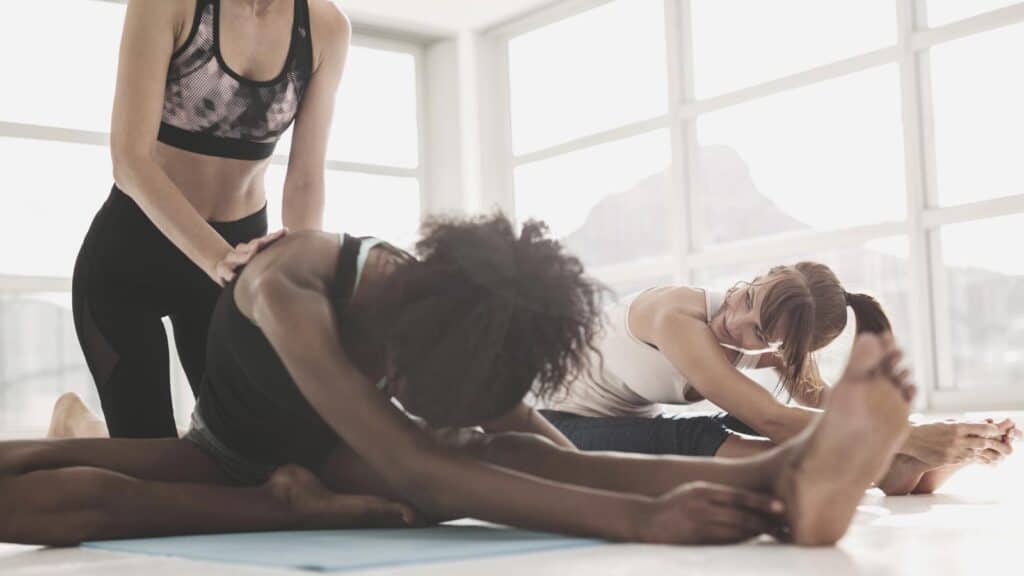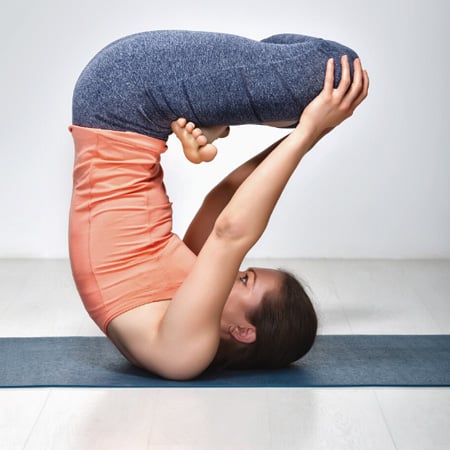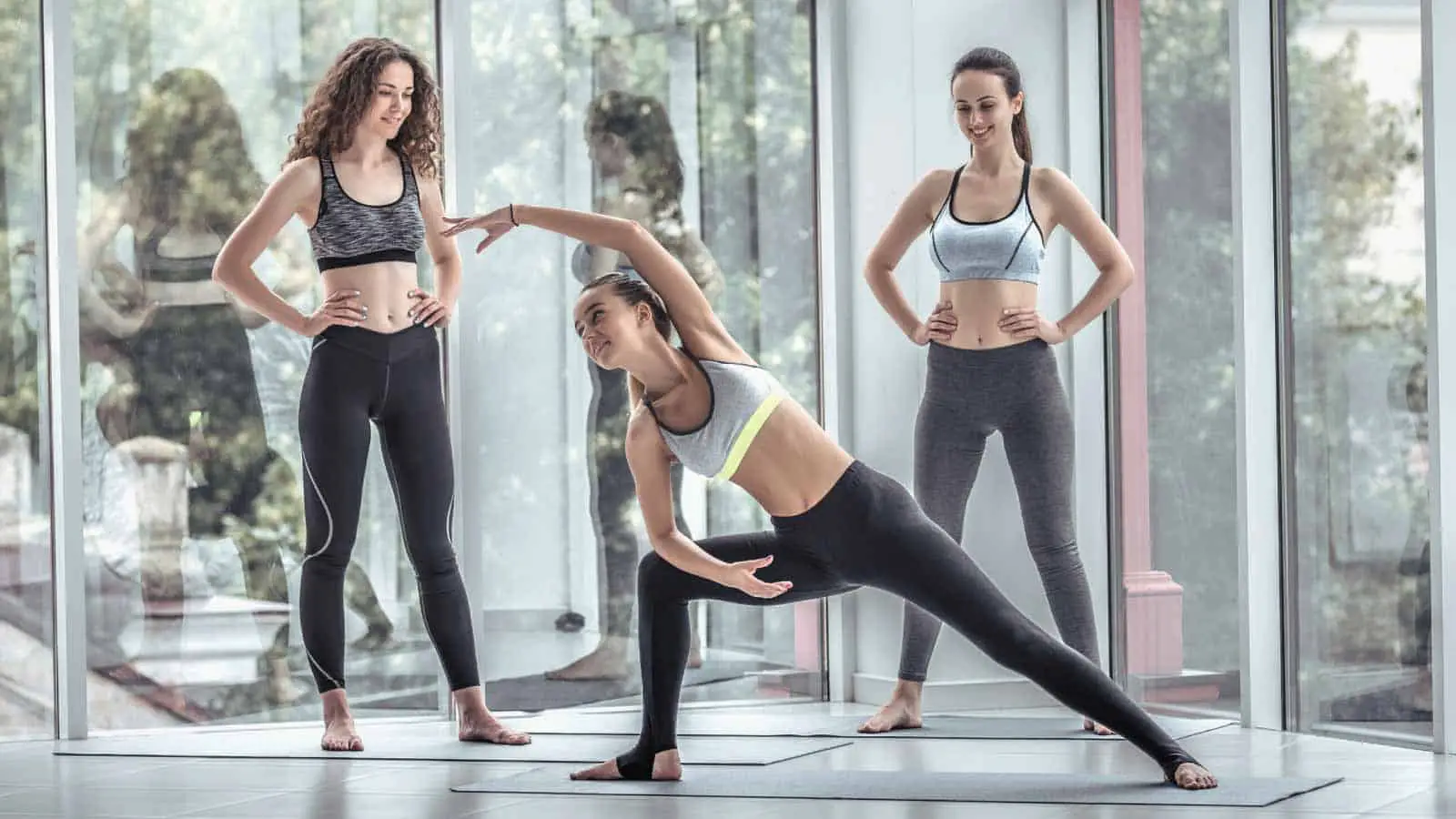You have been practicing yoga for a while and have noticed many changes. You started practicing yoga to get more flexible and your hamstrings were feeling tight. Your lower back was giving you some problems, too. Someone mentioned to you that practicing yoga could help with those things, so you gave it a try.
Sure enough, with your consistent attendance, you gained more flexibility and mobility throughout your entire body. You even got stronger in your upper body and toned your abs. The best thing, and something you didn’t quite expect, you experienced a greater sense of calm in your mind. That stress you used to carry around seems to have melted away. Your outlook on the world has shifted, too. Even with so many unfortunate and tragic things permeating our societies right now, you have remained positive and hopeful. Did you experience the benefits of yoga?
There are many benefits of yoga and you have now discovered the potential of the practice.
You have experienced that the results of a yoga practice go well beyond the physical. Yoga taps into the intellect and emotional realms, too.
If yoga could do this for you, don’t you think others could change and grow from it, too?
Your yoga teacher and the nature of having a yoga community have given you a new insight: more reliable, genuine relationships, a supportive network, and an increase in your self-esteem. You’ve encouraged your friends to join you in some of your classes because you have seen these positive effects. Some have stuck with it, while others have not. Maybe you can do more? What if YOU became a yoga teacher? Perhaps you can share what you have learned with others.
What Does It Take to Become a Yoga Instructor?

First and foremost, if you are devoted to yoga practice and have experienced yoga, you have made the first step toward becoming a yoga teacher.
Next, if you want to learn more about the history and philosophy of this ancient art and how to teach it, then that is another step forward. And lastly, if you have the desire to share your knowledge with aspiring yogis so they, too, can reap the benefits of the practice, then a formal training program may be ideal for you.
Being a yoga instructor takes commitment, dedication, focus, and patience.
These are some of the traits you learn as a yoga practitioner, but they are also the traits needed to endure a yoga training and becoming a competent yoga instructor.
Also involved with becoming a yoga instructor is the comfort of teaching groups and individuals, being authentic as a teacher, encouraging growth from your students, and being open-minded to the emotional impact of yoga on your students. You may recall your own personal emotional developments while practicing yoga. You probably experienced many ups and downs in your mental and emotional state during your yoga journey. Your instructor held the yoga space so you could experience these feelings on your yoga mat. They intended to allow you to grow without intruding any judgment. You will see the same transitions in your students, and you will also be the curator of holding a safe space for them.
Always a Student

Even though you will be standing in the position of teacher and instructor, you still remain a student of the yogic philosophy. Although the construct of yoga is simple, the breadth of the practice is vast and deep. You will always be learning. Your teaching practice will evolve over time as you develop a deeper connection with the yogic lessons. These teachings will further your personal growth as well as benefit your potential students.
As you can see, there is a great deal that goes into wanting to become a yoga instructor. If you’ve checked all the above boxes and want to continue this journey, let’s take a deeper dive into what it takes and what is involved with becoming a yoga instructor.
What Are the Requirements of a Yoga Teacher Training?
To become a certified yoga instructor, one needs to participate in an accredited yoga school. The minimum number of hours required for certification is 200.
Enrolling in a yoga teacher training program is a big commitment; it’s very similar to joining a University.
You can expect to pay tuition, read and study yoga books, gain feedback from a yoga faculty, complete and submit homework, and practice teaching yoga.
The topics you will study include yoga history, philosophy, ethics, anatomy, and the fundamentals of teaching. You’ll be introduced to the different styles of yoga and their historical origins. Your journey begins with understanding the ancient context of yoga, its intention, and its purpose.
By exploring the early teachings of yoga, you will deepen your own knowledge of yoga as well as discover a new level of comprehending your personal yoga practice. As your learning expands, so will your teaching. Yoga is designed to broaden your perspective. As a student of yoga, you experienced this expansion. When you become a yoga teacher in training, the philosophical teachings’ nuances will heighten awareness of what yoga is.
When you eventually teach yoga to your own students, you will be spreading that broadened perspective on life and living.
These lessons are embedded in the intellectual components of yoga: the verbal and written philosophy, the ethical principles of yoga, and the mental, physical, and spiritual contexts of the practice. You will be learning just as the ancient yogis learned more than 5,000 years ago.
Finding Your Voice: Teaching with Intention
In yoga teacher training, you will have the opportunity to practice teaching in front of a group. Classes will begin with your peers, the other students in your training program. These classes are an essential component of teacher training.
You will learn the basics of teaching a yoga class: giving breath cues, naming of postures, guiding students through yoga sequences, and more.
In some respects, this is a public speaking lesson. You’ll learn how to project your voice, be a leader and guide, capture students’ attention, hold space for them, and convey a yoga message. But teaching yoga is so much more than just saying the words and putting bodies into postures. Integrated in the directions of moving your students through a series of poses is a story and intention.
Every yoga posture in yoga has a deeper meaning. That is something you will learn through your studies during the yoga teacher training program.
Not only is there a physical component and benefit to the yoga postures, but they have emotional, spiritual, and metaphysical meanings as well.
In your studies you may learn of the Hindu mythology attributed to the yoga postures you practice. Like other mythological stories of different cultures, these stories are like fables that can be valuable life lessons. Part of what you’ll learn in a yoga teacher training is how to relay these life lessons to your potential students through an instructed yoga class. The trick in being able to do this effectively is to have an intention when you teach. That is,
what is the message you’d like to communicate to your students? Is it love, appreciation, strength, growth, release? It can be just about anything.
When you hold this message in your heart and you truly believe it, that intention can be circulated energetically throughout your class.
Not only does this mean having the ability to speak in front of a group, but it also means holding the truths of yoga and sharing them with your students. In other words, do you walk-the-walk and talk-the-talk.
If you live by the ethical principles of yoga, then it will shine clearly through your teaching practice.
Your students will feel your authenticity when you teach them. As a result, they learn and live by them, too.
What Types of Yoga Should You Study?

In a typical 200-hour teacher training, you will gain general knowledge about different yoga styles and disciplines. You can also take trainings that have a specific focus: Yin Yoga, Ashtanga yoga, Yoga Nidra, etc. It is recommended, though, that you take a general education training to get a taste of the various styles of yoga.
From there, you can decide how you’d like to further your knowledge and learn more about these individualized types of yoga. Notice what speaks to your heart; which style do you gravitate to? Part of your training will be practicing some of these specific yoga styles. While engaging in these practices, you will begin to find your own yoga voice. Your authentic self will emerge and you’ll share that real-self with your students through the style of yoga from which you teach.
Where To Do Yoga Teacher Training?
Because yoga classes are extremely popular and quite mainstream, it is not too difficult to find a yoga teacher training. Many yoga studios are accredited yoga schools and offer 200-Hour Yoga Teacher Training Programs. Check with your local studio to see if they offer such a program. This can be quite convenient because you will already be familiar with the space, the teachers, and the styles of yoga practiced.
If you’re feeling adventurous and like to travel, you can also find yoga teacher training offered abroad. Explore different cities and cultures and immerse yourself in a training program beyond your regular yoga community. Study in France, Germany, or Italy. How would you like to study yoga in it’s country of origin: India! Explore places like Bali, Indonesia, Thailand, and other exotic places to enrich your learning experience. Training s like this also turn into yoga retreats. They take you out of your normal routines so you can truly focus on one task: learning how to teach yoga.
How Long Will Yoga Teacher Training last?
The Yoga Teacher Trainings (YTT) usually immersive in nature. That is, you can complete the entire YTT 200 hours within 2-3 weeks. This would be an intensive study-abroad program with studies occurring every day, all day. This is ideal if you want to complete a training in a short period of time (and get a vacation out of it, too!)
Not everyone, however, has the luxury of traveling. One may need to find something more convenient that fits their budget and schedule. Other training programs last anywhere from 3 months to 6 months. That way, you can integrate your training into your current work/school schedule.
Another option that may be even more convenient for some is to take a training program online.
Yes, this is certainly an option today. With the advancement of technology, students and teachers and interact and learn together with video-conferencing software.
How Much Does Yoga Teacher Training Cost?
Taking Yoga teacher training program is a financial investment. Expect the tuition to range between 1000 EUR-3000 EUR depending on the length and destination of the course. If this seems too expensive, you may be able to work out a payment plan with the yoga school.
It is also worth investigating scholarships and grants for teacher training programs if you really want to participate, but your finances won’t allow it.
If you really want to become a yoga teacher, don’t let the cost deter you. There are many viable options available that can assist you with your goal.
Shop Around
Due to the numerous options for accredited Yoga Teacher Training programs worldwide, it is highly recommended that you shop around. Talk to friends and colleagues who may have taken a teacher training.
Read online reviews, call and talk to the studios that offer Yoga Teacher Trainings, and speak to the lead member that will facilitate the training.
You want to make sure that you choose wisely and gain the best training from your investment of time and money.
Become A Yoga Teacher
Hopefully, this has heightened your desire to become a certified yoga teacher. Join the ranks of important leaders that are much needed in our communities today. Yoga offers so much toward the health and healing that all of us need. You can be part of that evolution; help to pass along this lineage of yoga.
Become a yoga instructor and contribute to the expansion of yoga philosophy. Many yoga students are in need of these lessons. Let your voice be heard through the message of yoga.




